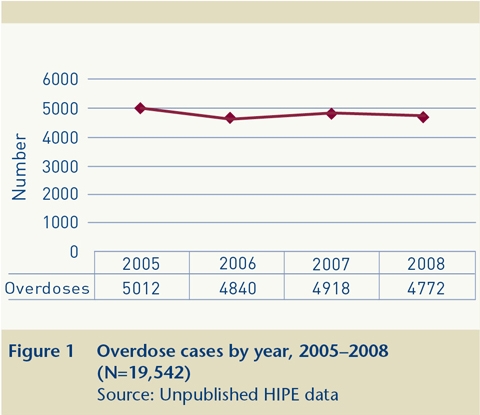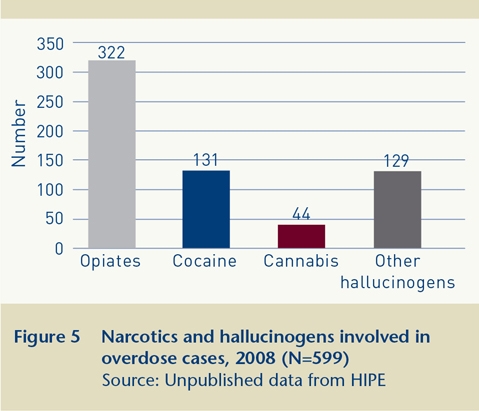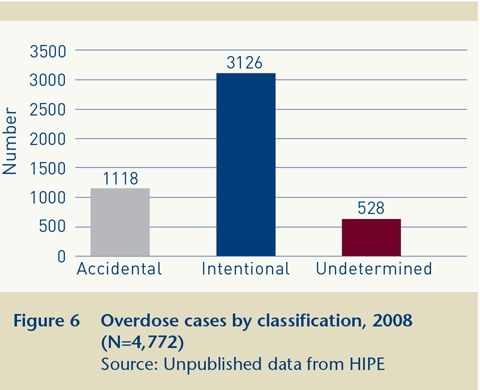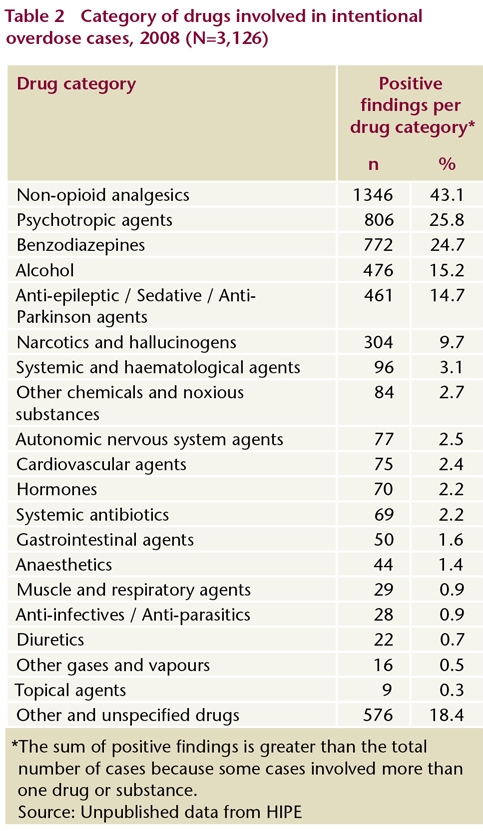Nelson, Mairea and Mongan, Deirdre (2010) Non-fatal overdoses and drug-related emergencies. Drugnet Ireland, Issue 34, Summer 2010, pp. 5-6.
| Preview | Title | Contact |
|---|---|---|
|
PDF (Drugnet Ireland 34)
- Published Version
1MB |
Data extracted from the Hospital In-Patient Enquiry (HIPE) scheme were analysed to determine trends in non-fatal overdoses discharged from Irish hospitals in 2008. There were 4,815 overdose cases in that year, of which 43 died in hospital. The 4,772 discharged cases are included in this analysis. The number of overdose cases decreased by 2.9% between 2007 and 2008 (Figure 1).
Characteristics of cases
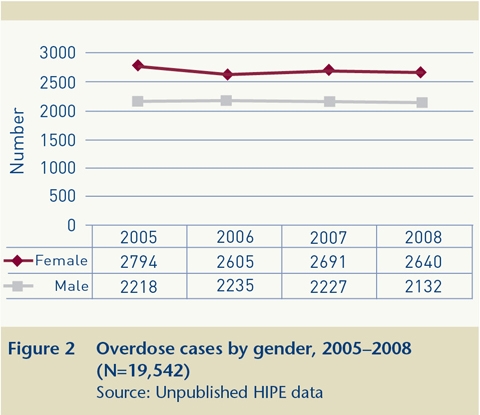
Age group
In the four-year period, one quarter of overdoses occurred in those aged 15–24 years, with the incidence of overdose decreasing with age (Figure 3). This pattern was similar for each of the years reported.
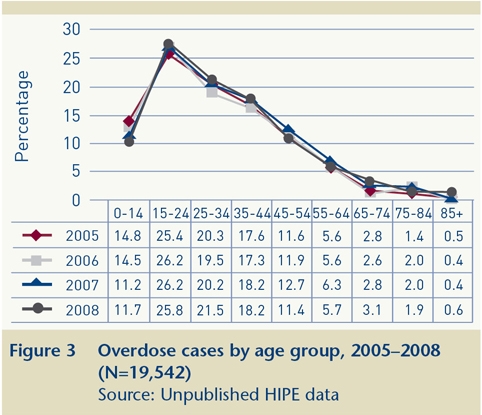
Area of residence
In 2008, 26 overdose cases were resident outside of Ireland and 10 cases were recorded as having no fixed abode; these 36 cases were excluded from this analysis. Figure 4 shows the area of residence of cases with an Irish address for the years 2005–2008. One fifth of cases in 2008 were resident in Dublin
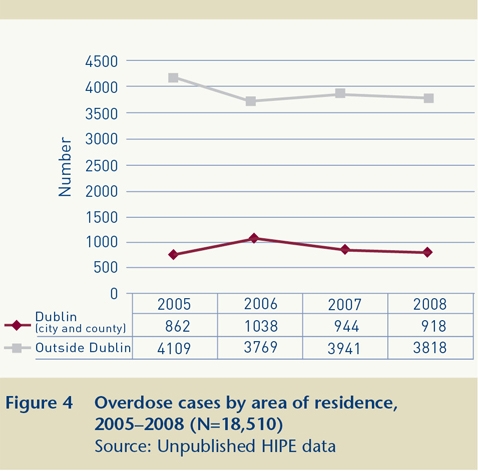
Drugs involved
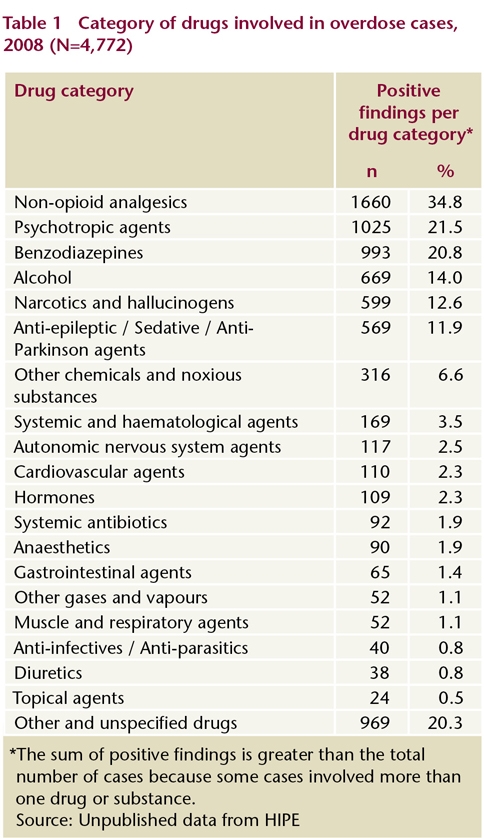
Overdoses involving narcotics or hallucinogens
Narcotic or hallucinogenic drugs were involved in 12.6% (599) of overdose cases in 2008. Figure 5 shows the number of positive findings of drugs in this category among the 599 cases. The sum of positive findings is greater than the total number of cases because some cases involved more than one drug from this category. Opiates were used in half of the cases, cocaine in one fifth and cannabis in 7%.
Table 2 presents the positive findings per category of drugs and other substances involved in cases of intentional overdose in 2008. Non-opioid analgesics were involved in 43% (1,346) of cases, psychotropic agents in 26% (806) and benzodiazepines in 25% (772).
Repository Staff Only: item control page
